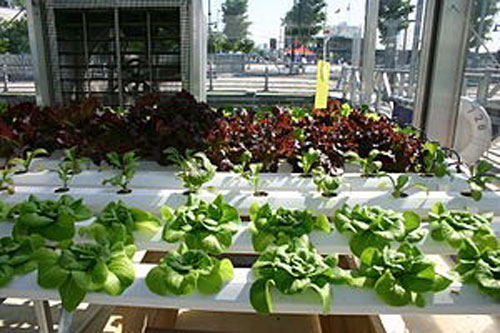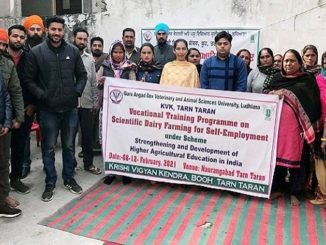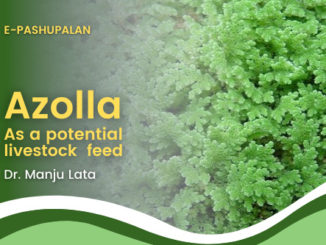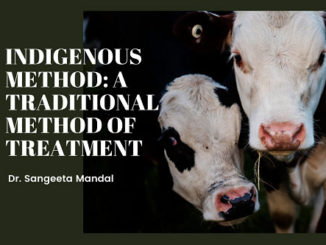A method of growing plants using mineral nutrient solutions, in water, without soil is Hydroponics (soil-less culture) a part of hydroculture. Fish waste, normal nutrients, or duck manure, solution with or without the use of artificial media used as a nutrients in hydroponics. Commonly used mediums include expanded clay, coir, perlite, vermiculite, brick shards, polystyrene packing peanuts and wood fiber. Hydroponics is a viable method of producing vegetables, crops and foliage plants. In 1937 William Frederick Gericke of the University of California at Berkeley first coined the term hydroponics .
A hydroponics system for growing plants in an aqueous nutrient solution. The solution is supplied to each by a branch pipe extending the length of the trough and including a plurality of outlets spaced at uniform intervals. The nutrients are thereby dispersed relatively evenly along the length of the trough. Each outlet has an associated aspirator or eductor whereby air is entrained by the solution issuing from the outlet thereby providing substantially uniform aeration of the nutrient solution. Each plant is supported by a receptacle having an open bottom through which the plant stem extends. The plant is held by resilient foam plastic inserts disposed between the plant stem and the receptacle wall.
Techniques
The two main types of hydroponics are solution culture and medium culture. The medium culture method has a solid medium for the roots and is named for the type of medium, e.g., sand culture, gravel culture, or rockwool culture. There are two main variations for each medium, sub-irrigation and top irrigation. Mostly for all techniques hydroponic reservoirs are now built of plastic, but other materials have been used including concrete, glass, metal, vegetable solids, and wood. The containers light should be excluded to prevent algae growth in the nutrient solution.
Static solution culture
Plants are grown in containers of nutrient solution, such as glass Mason jars (typically, in-home applications), plastic buckets, tubs, or tanks. The solution may be aerated or un-aerated. If un-aerated, the solution level is kept low enough that enough roots are above the solution so they get adequate oxygen. A hole is cut in the lid of the reservoir for each plant. Reservoir size can be increased as plant size increases. There can be one to many plants per reservoir.

A homemade system can be constructed from plastic food containers or glass canning jars with aeration provided by an aquarium pump, aquarium airline tubing and aquarium valves. Clear containers are covered with aluminum foil, butcher paper, black plastic, or other material to exclude light, thus helping to eliminate the formation of algae. The nutrient solution can be changed either once per week, or when the concentration drops below a certain level as determined with an electrical conductivity meter. Either water or fresh nutrient solution is added whenever the solution is depleted below a certain level. To maintain automatically the solution level a Mariotte’s bottle, or a float valve, can be used. In raft solution culture, plants are placed in a sheet of buoyant plastic that is floated on the surface of the nutrient solution. That way, the solution level never drops below the roots.
Continuous-flow solution culture
In continuous-flow solution culture, the nutrient solution constantly flows past the roots. Easy to automate than the static solution culture because sampling and adjustments to the temperature and nutrient concentrations can be made in a large storage tank that has potential to serve thousands of plants. Nutrient film technique( NFT), is the popular variation whereby a very shallow stream of water containing all the dissolved nutrients required for plant growth. NFT system is based on using the right channel slope, the right flow rate, and the right channel length.

The biggest advantage of the NFT system over other forms of hydroponics is that the plant roots are exposed to adequate supplies of water, oxygen, and nutrients. There is a conflict in all other forms of production between the supply of these requirements, since excessive or deficient amounts of one results in an imbalance of one or both of the others. NFT, because of its design, provides a system where all three requirements for healthy plant growth can be met at the same time, provided that the simple concept of NFT is always remembered and practiced, resulting in higher yields of high-quality produce are obtained over an extended period of cropping. A limitation of NFT is that it has very little buffering against interruptions in the flow.
Advantages
- It can grow anywhere.
- Uses 20 times less water than soil based gardening.
- The environment is sterile, which means no pesticides.
- This use 20% less space for growing.
- The system water can be reused, allowing it to conserve water.
- It can have complete control over nutrient balance by using Dyna-Gro formulas.
- No soil setup and testing hassles.
- Harvesting is easier.
- No mulching, tilling, changing of soil and weeding
- By using this technique we can grow year round.
Disadvantages
- Putting together a hydroponic system isn’t cheap.
- Constant supervision is required.
- Hydroponic systems are vulnerable to power outages. In the event of a power outage that outlasts your generators you will be manually watering your garden.
- Micro-organisms that are water-based can creep in rather easily.
- Growing a hydroponic garden demands technical expertise.
- Production is limited compared to field conditions
- If a disease appears all plants in the container will be affected.
- Without soil to serve as a buffer if the system fails plant death will occur rapidly.
Conclusion
There are numerous benefits of hydroponic gardening. Its practice can yield excellent results in short span of time with proper knowledge and techniques. Various environmental concerns, reduction in arable land, and scarcity of water can be easily conquered with the use of hydroponics. It is extremely beneficial for commercial farmers and home gardeners alike.








1 Trackback / Pingback